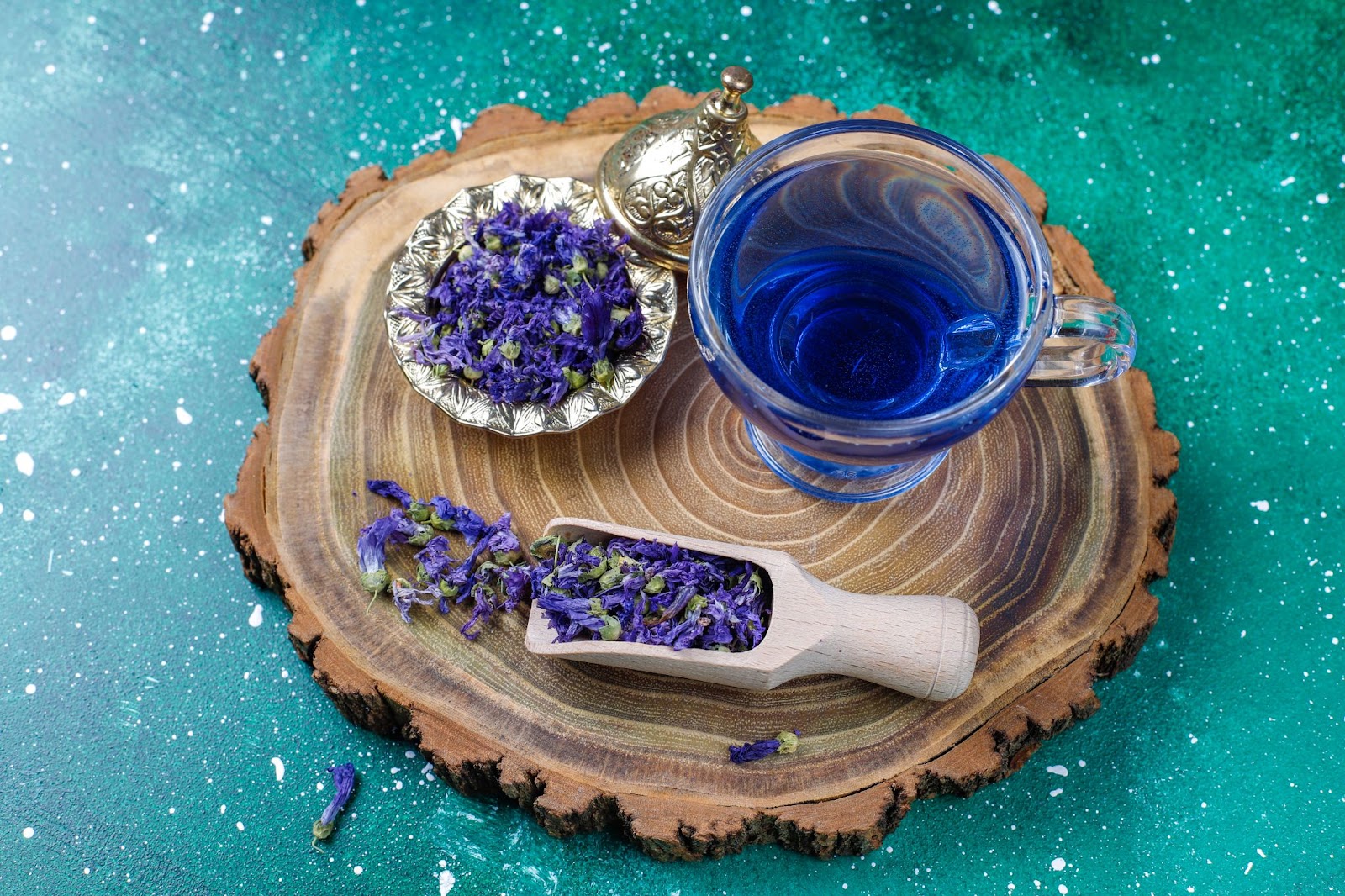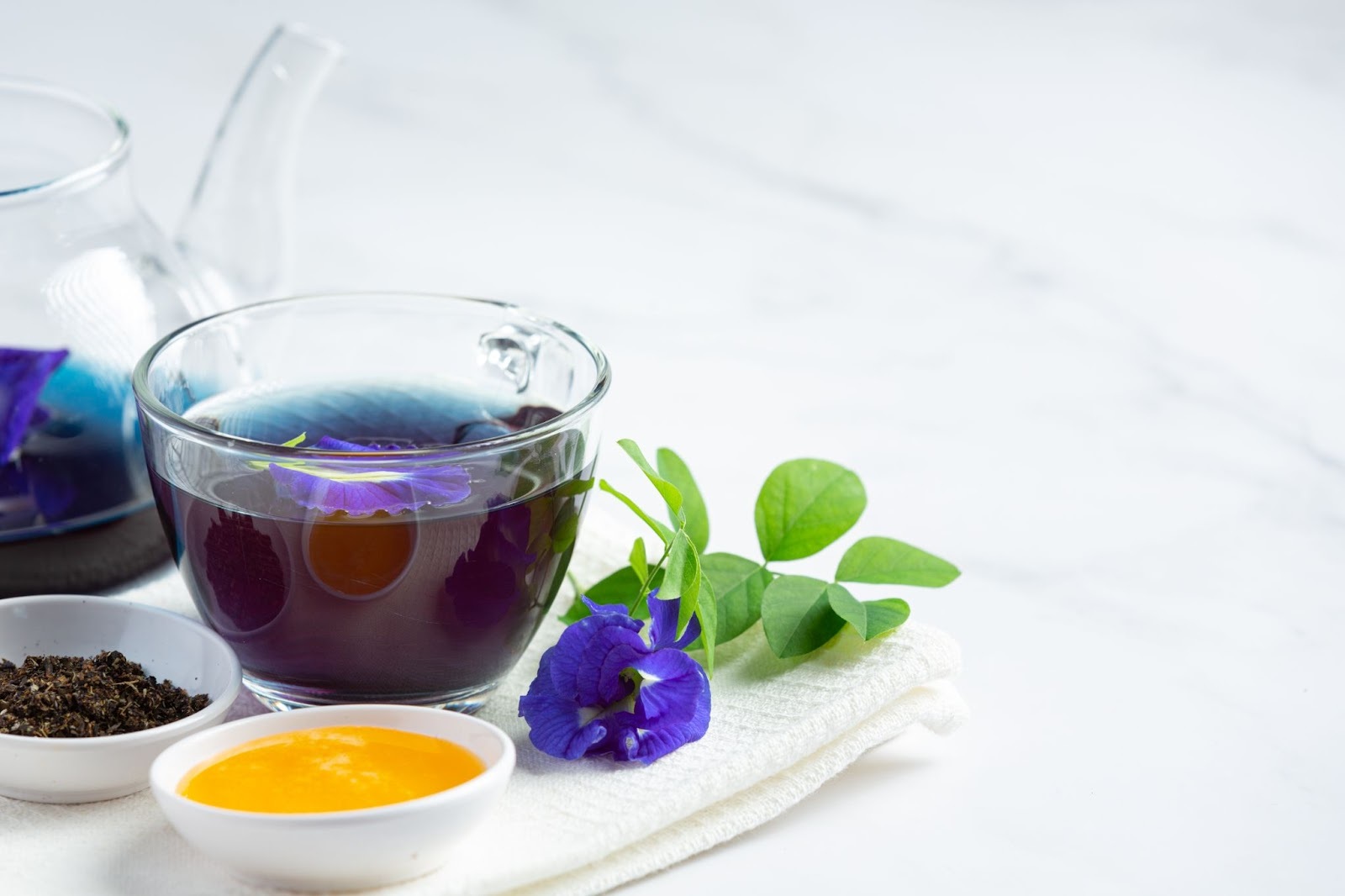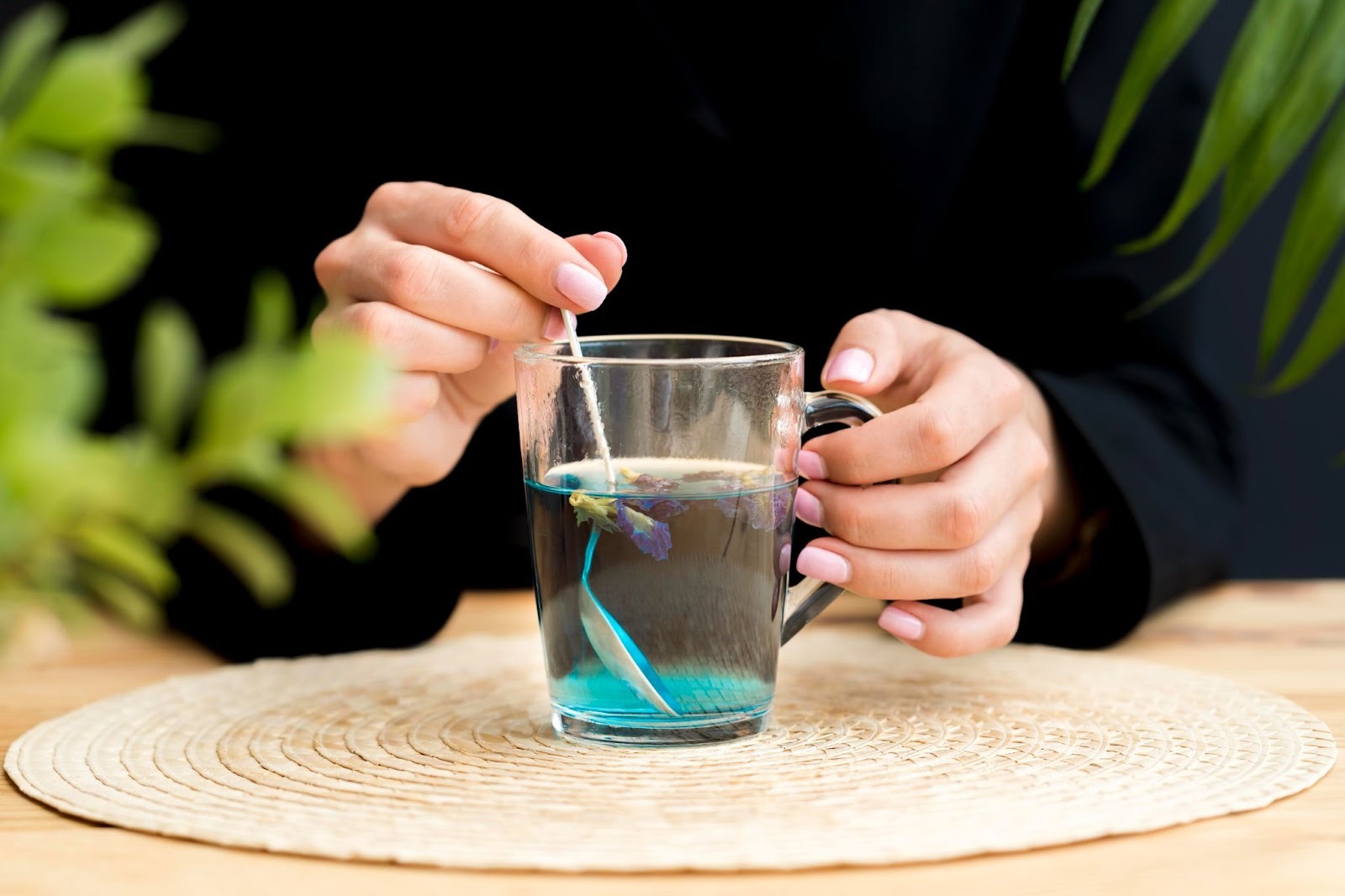
A warm cup of tea is a beverage that is also a ritual, a moment of calm in a busy day. Cornflower tea brings something extra to the table with its striking blue flowers and subtle floral notes. This tea's vibrant blue hue is only part of its story. For ages, it's been a favorite for herbal remedies, easing digestion, calming inflammation, and promoting relaxation.
Cornflower tea boasts a long history in traditional medicine. Besides being healthy, its vibrant petals add a touch of beauty to your tea collection. With its remarkable qualities, simple preparation, and daily benefits, cornflower tea will change the way you see tea.
What is Cornflower Tea?
Cornflower tea is a member of the daisy family and is made from the dried petals of the Centaurea cyanus flower heads, also known as bachelor's buttons. Don't let their beauty fool you; these blue cornflowers are good for your health. Antioxidants and flavonoids in cornflower (Centaurea cyanus) support your well-being.
Cornflower is a popular herbal tea because of its light, floral taste, and pretty blue color. In its loose-leaf tea form, cornflower offers a purer, more potent flavor than tea bags. It can be enjoyed on its own or combined with other herbs for a custom tea experience.
Cultural Significance and History of Cornflower Tea
Cornflower has been valued for centuries in European herbal medicine, particularly in France, Germany, and the United Kingdom. Traditionally, it was used to soothe eye infections and improve circulation; some even believed it could protect against bad luck.
Due to their natural antimicrobial effects, Napoleon’s soldiers used the blue petals to treat wounds during wartime. In many old stories, blue cornflowers represent hope, the ability to bounce back and get better. Many turn to cornflower as a herbal remedy to reduce inflammation and improve digestive issues.
How to Brew Blue Cornflower Tea
Brewing cornflower tea is simple, and a few minor tweaks can enhance its overall health benefits and taste.
- Heat water to about 203°F, just below boiling, when there are visible, rising strings of bubbles in the water.
- Add 1.5 teaspoons of dried petals per 8oz of hot water.
- Steep for five to seven minutes, allowing the high antioxidant content and anti-inflammatory properties to infuse.
- Strain and enjoy. Add honey, lemon, or a splash of milk for extra depth. Or, let it cool and serve over ice for an iced tea.
Cornflower tea pairs beautifully with herbs like chamomile to support relaxation or peppermint to support digestive health. Experimenting with blends can enhance both flavor and overall health benefits.

8 Blue Cornflower Tea Benefits
Behind the delicate petals of blue cornflower lies a powerhouse of nutrients contributing to overall health and well-being. Digestion problems, low immunity, and stress got you down? This time-tested herbal infusion with its anti-inflammatory compounds may help — it's been a natural remedy for generations.
1. Provides Antioxidants
Free radicals harm cells and cause some chronic diseases. Cornflower tea, however, is packed with antioxidants to protect cells and combat this damage. Its medicinal properties and immunological effects mean chronic diseases are less likely to happen, and your wellness improves. Incorporate this tea into your daily routine to support your heart and boost your immunity.
2. Promotes Eye Health
Cornflower tea is a natural remedy for eye irritation and is known to soothe tired, strained eyes. Whether from too much screen time or environmental irritants, a cool compress from brewed tea can reduce redness and discomfort. The tea itself contains flavonoids that support eye function and circulation.
3. Supports Digestive System and Gut Function
Drinking blue cornflower tea can help your digestive system by reducing bloating, easing cramps, and soothing stomach discomfort. Good bacteria in your gut thrive, thanks to this. Its mild diuretic effect cleanses the body of toxins. At the same time, it supports healthy bowel movements.
4. Promotes Relaxation and Reduces Stress
Blue cornflower tea has a light floral taste. This calming tea can help you relax and get a good night's sleep by reducing stress. Its mild sedative effects are well-known. A little calm returns whether it's evening or midday.
5. Boosts the Immune System
Blue cornflower tea has natural antimicrobial properties and supports the immune system by helping the body fight off infections. Staying healthy is easier when you eat right! Boosting your immune system and feeling great overall can be as simple as making healthy food choices regularly.
6. Provides Natural Anti-Inflammatory Properties
Cornflower tea is packed with powerful anti-inflammatory compounds that help soothe inflammation in the body. Drinking blue cornflower tea can support recovery and provide relief from joint pain, skin conditions, and muscle soreness.
7. Supports Liver Detoxification and Function
The liver's main job is to detoxify, and blue cornflower tea assists this vital function. The liver gets a boost from the flavonoids packed in cornflower that help clear out toxins and improve blood flow.
8. Aids in Weight Management and Metabolism
Boost your metabolism and gut health with cornflower tea — it's a great way to help manage your weight. The naturally sweet flavor helps control sugar cravings. At the same time, it gently supports your body's natural digestive processes, leading to more efficient food breakdown and nutrient absorption.
How to Incorporate Cornflower Tea into Your Daily Routine
Cornflower tea is easy to integrate into daily life. Drinking a cup in the morning can provide a gentle antioxidant boost, while a cup in the evening helps calm you and may aid sleep. It tastes great, hot or cold! Try adding blue cornflower tea to your favorite blends for a more interesting and potentially healthier tea experience that's surprisingly good!
Best Herbal Tea Pairings for Blue Cornflower Tea
Blue cornflower tea offers a light, sweet taste with a hint of flowers. It's excellent in many different kinds of tea. Here are some of the best herbal and classic tea pairings for cornflower tea:
- Green tea: A powerhouse of antioxidants, green tea complements cornflower tea’s ability to combat oxidative stress while adding a light, grassy flavor.
- Chamomile: Known for its calming effects, chamomile enhances cornflower tea’s ability to promote relaxation and improve sleep quality.
- Peppermint: Feeling bloated? Peppermint can help! Its cooling effect is known to soothe the gut.
- Lemon balm: Its lemony flavor brightens up anything, helps with stress, and lifts your mood.
- Lavender: Another floral powerhouse, lavender pairs beautifully with blue cornflower tea for a truly relaxing and aromatic experience.
Enjoy this tea solo, or blend it with other premium teas for a flavor and health upgrade.
What Else Can You Do With Blue Cornflower Petals?
Blue cornflower petals aren’t just for tea; herbalists, chefs, and crafters love them for many reasons. They offer rich color, fantastic flavor, and natural health benefits. Their uses are limited only by your imagination. Think vibrant homemade soap, delicious fruit tarts, and stunning floral arrangements.
Natural Dye Properties and Applications
The blue pigment of cornflower petals has been used as a natural dye for centuries. While it doesn’t produce an intense color like other plant-based dyes, the blue cornflower petals create a soft, earthy blue hue that works well for textiles, handmade paper, and even natural cosmetics.
When infused into water, oil, or alcohol-based solutions, the blue cornflower petals release a subtle tint that can be used in everything from DIY watercolor paints to homemade soaps and skin products.
Culinary Uses for Flavor and Digestive Health
Blue cornflower petals are edible and often found in gourmet dishes for their flavor and visual appeal. The slightly sweet flavor and vivid color are a chef's dream. They add a beautiful pop to salads, elevate soups, and even improve the look of baked goods.
The petals also garnish cocktails, infuse syrups, and blend into herbal seasonings. Aside from their aesthetic appeal, blue cornflower petals contain digestive-supporting properties that can help improve gut health when consumed in food or tea.
Crafting, Potpourri, and Floral Arrangements
The delicate texture and vibrant color of dried blue cornflower petals make them popular for crafting and home décor. They're commonly used in potpourri blends, adding color and a mild floral scent to natural air fresheners. Many people incorporate them into homemade bath salts, soaps, and scrubs for a touch of botanical beauty.
Dried blue cornflower petals complement other dried flowers in floral arrangements, creating stunning bouquets, wreaths, and decorative displays. Their long-lasting color makes them a great addition to dried floral crafts and pressed art.

Blue Cornflower Tea: The Perfect Excuse to Drink More Tea
Blue cornflower tea is more than just a beautiful cup of tea. With its slightly sweet taste, natural ingredients, and powerful health benefits, it’s a simple way to support overall wellness. Whether you’re drinking it to reduce inflammation, improve digestion, or simply enjoy its soothing effects, it’s an easy addition to any tea lover’s routine.
Looking for the best quality? Nelson’s Tea offers premium teas, including loose-leaf tea blends with cornflower. Explore the collection and experience the benefits of this blue floral powerhouse for yourself.
These statements have not been evaluated by the Food and Drug Administration. This product is not intended to diagnose, treat, cure, or prevent any disease.

